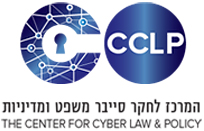PI: Gabriel Weimann
Abstract:
Algorithmic decision-makers dominate many aspects of our lives. Beyond simply performing complex computational tasks, they often replace human discretion and even professional judgement. As sophisticated and accurate as they may be, autonomous algorithms may cause damage.
A car accident could involve both human drivers and driverless vehicles. Patients may receive an erroneous diagnosis or treatment recommendation from either a physician or a medical-algorithm. Yet because algorithms were traditionally considered "mere tools" in the hands of humans, the tort framework applying to them is significantly different than the framework applying to humans, potentially leading to anomalous results in cases where humans and algorithms decision-makers could interchangeably cause damage. This article discusses the disadvantages stemming from these anomalies and proposes to develop and apply a "reasonable algorithm" standard to non-human decision makers- similar to the "reasonable person" or "reasonable professional" standard that applies to human tortfeasors. While the economic advantages of a similar notion have been elaborated on in the literature, the general concept of subjecting non-humans to a reasonableness analysis has not been addressed. Rather, current anecdotal references to applying a negligence or a reasonableness standard on autonomous machines mainly discarded the entire concept, primarily because "algorithms are not persons". This article identifies and addresses the conceptual difficulties stemming from applying a "reasonableness" standard on non-humans, including the intuitive reluctance of subjecting non-humans to human standards; the question of whether there is any practical meaning of analysing the reasonableness of an algorithm separately from the reasonableness of its programmer; the potential legal implications of a finding that the algorithm "acted" reasonably or unreasonably; and whether such an analysis reconciles with the rationales behind tort law. Other than identifying the various anomalies resulting from subjecting humans and non-humans conducting identical tasks to different tort frameworks, the article's main contribution is, therefore, explaining why the challenges associated with applying a "reasonable standard" to algorithms are overcome. .. Read More in the PDF FIle.
© 2018 THE CENTER FOR CYBER LAW & POLICY. All rights reserved.





